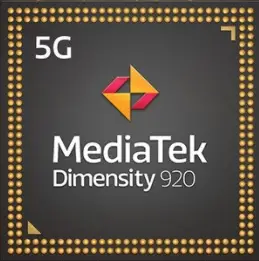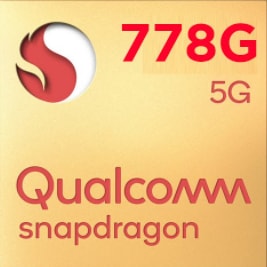Mediatek Dimensity 920 vs Qualcomm Snapdragon 778G
We’ve put together a comprehensive comparison of the newly released Dimensity 920 and Snapdragon 778g SoCs, brought to you by Mediatek and Qualcomm respectively. This analysis breaks down the pros and cons of these 8-core CPUs, evaluated through their Geekbench, Antutu, and 3DMark scores, along with their technical details.
Review
CPU Performance
Evaluation of Single-Core and
Multi-Core Processor Performance
Gaming Performance
Gaming and OpenCL/Vulkan
Performance of the Graphics Processing Unit (GPU)
Battery life
Energy Efficiency in Battery Usage
Tech Insist Score
Overall Performance Rating of the
Chip
Key Differences
Pros of Dimensity 920
- Dimensity 920 has 4.17% higher CPU clock speed than Snapdragon 778g (2500 vs 2400 MHz).
- Dimensity 920 has 93.88% higher GPU clock speed than Snapdragon 778g (950 vs 490 MHz).
Pros of Snapdragon 778g
- Snapdragon 778g has 8.46 % better AnTuTu 9 score than Dimensity 920 ( 540 K vs 498 K).
- Snapdragon 778g has latest instruction set, hence better than Dimensity 920 .
Benchmarks
Evaluating performance through competitive testing in leading benchmarks.AnTuTu 10
| CPU | 139277 | 161744 |
| GPU | 128453 | 156423 |
| Memory | 96272 | 90737 |
| UX | 134315 | 131554 |
| Total score | 498317 | 540458 |
GeekBench 6
Single-Core Score
Multi-Core Score
3DMark
3DMark Wild Life Performance
| Stability | 99% | 98% |
| Graphics test | 12 FPS | 14 FPS |
| Score | 2003 | 2468 |
Specifications
Full list of technical specifications of Dimensity 920 and Dimensity 9300CPU
| Architecture | 2x 2.5 GHz – Cortex-A78 6x 2 GHz – Cortex-A55 |
1x 2.4 GHz – Kryo 670 Prime (Cortex-A78) 3x 2.2 GHz – Kryo 670 Gold (Cortex-A78) 4x 1.9 GHz – Kryo 670 Silver (Cortex-A55) |
| Cores | 8 | 8 |
| Base Frequency | 2000MHz | 1900MHz |
| Turbo Frequency | 2500MHz | 2400MHz |
| Instruction set | ARMv8-A | ARMv8.4-A |
| L2 cache | - | - |
| L2 cache | - | 2 MB |
| L3 cache | 2 MB | - |
| Process | 6 nanometers | 6 nanometers |
| Transistor count | 12 billion | - |
| TDP (Sustained Power Limit) | 10 W | 5 W |
Graphics
| GPU name | Mali-G68 MC4 | Adreno 642L |
| Architecture | Valhall 2 | Adreno 600 |
| GPU frequency | 950 MHz | 490 MHz |
| Pipelines | 4 | 2 |
| Shading units | 64 | 384 |
| Total shaders | 128 | 768 |
| FLOPS | 684 Gigaflops | 684 Gigaflops |
| Vulkan version | 1.1 | 1.1 |
| OpenCL version | 2.0 | 2.0 |
| DirectX version | 12 | 12 |
AI Accelerator
| Neural processor (NPU) | MediaTek APU 3.0 | Hexagon 770 |
Memory
| Memory type | LPDDR5 | LPDDR5 |
| Memory frequency | 3200 MHz | 3200 MHz |
| Bus | - | - |
| Max bandwidth | - | 25.6 Gbit/s |
| Max size | 16 GB | 16 GB |
Multimedia (ISP)
| Storage type | UFS 2.1, UFS 2.2, UFS 3.1 | UFS 3.0, UFS 3.1 |
| Max display resolution | 2520 x 1080 | 2520 x 1080 |
| Max camera resolution | 1x 108MP, 2x 20MP | 1x 192MP, 2x 36MP |
| Video capture | 4K at 30FPS | 4K at 30FPS |
| Video playback | 4K at 30FPS | 4K at 30FPS |
| Video codecs | H.264, H.265, AV1, VP9 | H.264, H.265, VP8, VP9 |
| Audio codecs | AIFF, CAF, MP3, MP4, WAV | AAC, AIFF, CAF, MP3, MP4, WAV |
Connectivity
| Modem | - | X53 |
| 4G support | LTE Cat. 18 | LTE Cat. 24 |
| 5G support | Yes | Yes |
| Download speed 5G | Up to 2770 Mbps | Up to 3700 Mbps |
| Download speed 4G | Up to 1200 Mbps | Up to 1200 Mbps |
| Upload speed 5G | Up to 2500 Mbps | Up to 2900 Mbps |
| Upload speed 4G | Up to 800 Mbps | Up to 210 Mbps |
| Wi-Fi | 6 | 6 |
| Bluetooth | 5.2 | 5.2 |
| Navigation | GPS, GLONASS, Beidou, Galileo, QZSS, NAVIC | GPS, GLONASS, Beidou, Galileo, QZSS, NAVIC |
Info
| Announced | August 2021 | May 2021 |
| Class | Mid-range | Mid-range |
| Model number | MT6877T | SM7325 |
| Official page | Dimensity 920 official site | Snapdragon 778g official site |

